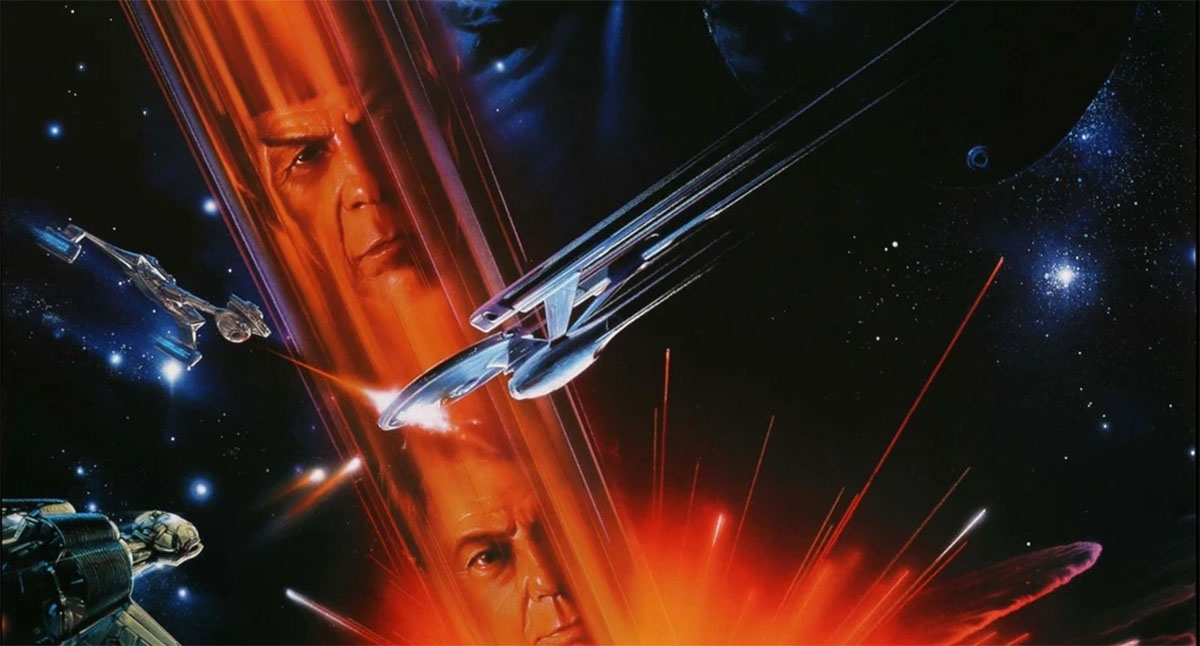“It was I who committed Captain Kirk to that peace mission, and I who had to bear the responsibility for the consequences to him and to his crew.”
Anyway, yeah, I love Star Trek VI. It was kind of the holy grail of my Star Trek love at the time, the culmination of the original crew’s adventures and the first major crossover event between Star Trek and The Next Generation. The bonds that tie “Unification” to The Undiscovered Country were, of course, wildly exaggerated in the marketing (there is no element of the plot of the movie that is more than tangentially relevant here) but it was an exciting warm-up act to the feature film in December, nonetheless.
“Unification II” is better than its predecessor for the obvious reason: it’s the one with Spock in it. Yep, the episode-long tease that is “Unification I” was shameless and irritating as hell; at least this time, we get to see the guy we came to see. It’s got a better notional story, too, as Spock attempts to reunify the Vulcans and the Romulans after their centuries-long split. We get to spend some time on Romulus – always one of my favourite places to fantasize about – and meet the paranoid (and often gossipy) people living under their totalitarian regime. And Commander Sela returns for the last time, and though she’s as ineffectual here as she was in “Redemption II,” Denise Crosby gives a wonderfully tart performance. (Her one-off line about enjoying writing, but not getting to do enough of it in her military job, is the only multi-layered bit the character ever provided.)
Leonard Nimoy, unsurprisingly, is marvelous throughout. He remains one of the most committed actors to ever bring a character to life in Star Trek, and what makes him remain so watchable in all of his latter appearances is his commitment to what I guess you could call quality control: he only plays Spock when there’s a good reason to play Spock. (He turned down a throwaway part in Generations, but got involved in the 2009 reboot movie, due to this caution.) Watching Nimoy mix it up with Patrick Stewart is a lot of fun, especially given that the two actors have such radically different performance styles – the Jewish American stage and television actor matching character beats with the British Shakespearean thesp.
The intermediate scenes of Riker tying up his stolen freighter plot are a little better than the “Unification I” bits, although Next Generation struggles with digging into the seamier side of the Star Trek universe as usual. A four-armed organist in a Star Wars-inspired dive bar is a nice touch, but it doesn’t feel as organic as similar material on DS9, even when the fat Ferengi shows up. (Although: Worf getting inspired enough to start singing opera is pretty good.) And the inevitable pairing of Spock with Data – the episode’s biggest fan reacharound – comes off pretty well, by choosing to highlight the two characters’ differences, rather than all the things that made everyone say that Data was the new Spock for five years.
This would be a good time to (once again) plug the excellent prequel graphic novel that lead into the 2009 Star Trek film; it somewhat ties off the story of what happened to Spock on Romulus after “Unification” ends. Plus, it’s the best thing to come out of the J.J. Abrams Star Trek regime, including either of the movies and any other ancillary material. And Picard’s in it. And Nero. And Data! Seriously, just read it.

